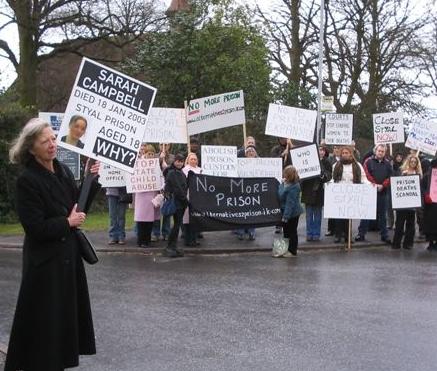
Australia’s Immigration Minister has vowed to ship off asylum seekers, including unaccompanied children, to Malaysia. This was meant to be Australia’s “solution” to a “crisis” of asylum seekers. Simple detention simply wasn’t enough. The State announced its intention late this week, and now seems somewhat surprised at the outcry. The government never thought that the fate of children of color, call them Black children, could matter quite so much.
This aspirational project of turning children of color, Black children, into distant and dimly remembered specters comes at a poignantly timely moment.
Today, June 5, 2011, is the last day of “Glenn Ligon: America”, a retrospective at the Whitney Museum of American Art in New York City. Ligon is famous for works that turn words into paintings, stencils that conjure histories of slavery, of racism, of homophobia, of violence. Some of these pieces have been described as “stenciled sentences pulled from different sources.” The sentences aren’t pulled nor are they transcribed.
They are, instead, translations, as they are invocations.
Consider, for example, “Untitled (I’m Turning Into a Specter before Your Very Eyes and I’m Going to Haunt You)”. This has been described as having been pulled from a play by Jean Genet, The Blacks: A Clown Show.
But the line in Genet’s play is actually, “You’re becoming a specter before their very eyes and you’re going to haunt them.”
And it has a particular New York history.
On May 4th, 1961, almost fifty years ago to the day, Jean Genet’s The Blacks: A Clown Show opened in New York, at the St. Marks Playhouse, and it was immediately hailed as a transformative event. When it opened, the play, a meditation on Blackness, Black rage and Black liberation, was described as “brilliantly sardonic”, “a lyrical tone poem”, a play of “furies”
The original cast included Roscoe Lee Browne, James Earl Jones, Louis Gossett, Jr., Ethel Ayler, Cicely Tyson, Godfrey Cambridge, Maya Angelou, and Charles Gordone. The Blacks was the longest running Off-Broadway non-musical of the entire 1960s.
In an epigraph to the play, Genet claimed “One evening an actor asked me to write a play for an all-black cast. But what exactly is a black? First of all, what’s his color?”
Fifty years later, we watch the Australian government plan to ship unaccompanied Black children to Malaysia, and we ask, “But what exactly is a Black child? First of all, how old is she?”
The children Australia plans to send to Malaysia are children seeking asylum. Not failed asylum seekers, but rather children in the process of seeking asylum. Australia’s Minister of Immigration believes that turning children into specters will deter “people smugglers”.
Today it was announced that the “deal” is being altered. Girl refugees might not be sent to Malaysia. The girls “spared” from deportation will still be unaccompanied and still be behind bars. They will not thank the State for this “gift”, no more than the boys will. These children designated as specters-to-come will haunt the State for decades. Fifty years ago, the specters will haunt them. Today, the specters will haunt you. Fifty years from now … the specters will haunt … us.
(Art Credit: Glenn Ligon / Philadelphia Museum of Art / Washington Post)






